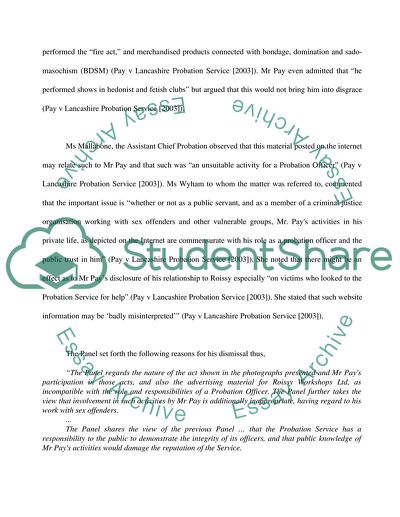Cite this document
(Critically Assessing the Statement - Private Life Should Mean What It Essay - 2, n.d.)
Critically Assessing the Statement - Private Life Should Mean What It Essay - 2. Retrieved from https://studentshare.org/law/1751958-despite-cases-such-as-pay-v-lancashire-probation-service-and-x-v-y-private-life-should-mean-what-it-says-critically-assess-this-statement
Critically Assessing the Statement - Private Life Should Mean What It Essay - 2. Retrieved from https://studentshare.org/law/1751958-despite-cases-such-as-pay-v-lancashire-probation-service-and-x-v-y-private-life-should-mean-what-it-says-critically-assess-this-statement
(Critically Assessing the Statement - Private Life Should Mean What It Essay - 2)
Critically Assessing the Statement - Private Life Should Mean What It Essay - 2. https://studentshare.org/law/1751958-despite-cases-such-as-pay-v-lancashire-probation-service-and-x-v-y-private-life-should-mean-what-it-says-critically-assess-this-statement.
Critically Assessing the Statement - Private Life Should Mean What It Essay - 2. https://studentshare.org/law/1751958-despite-cases-such-as-pay-v-lancashire-probation-service-and-x-v-y-private-life-should-mean-what-it-says-critically-assess-this-statement.
“Critically Assessing the Statement - Private Life Should Mean What It Essay - 2”, n.d. https://studentshare.org/law/1751958-despite-cases-such-as-pay-v-lancashire-probation-service-and-x-v-y-private-life-should-mean-what-it-says-critically-assess-this-statement.


